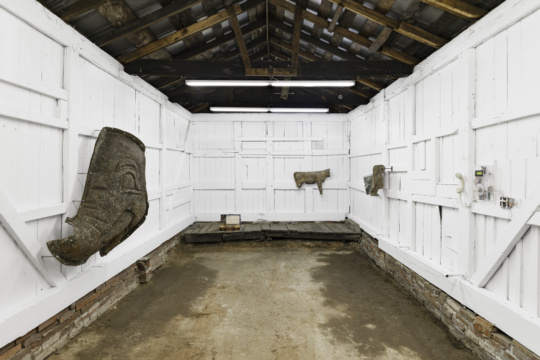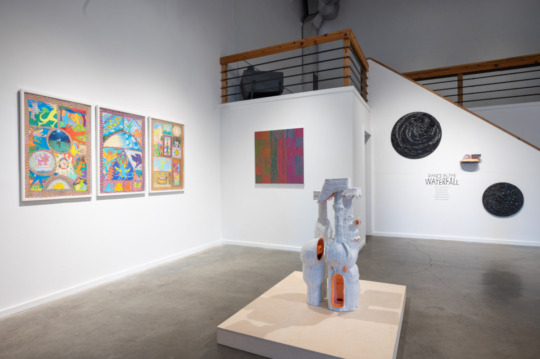
The American philosopher John Dewey lived from 1859 to 1952—a happy accident of birth that allowed him to witness America’s slow move towards modernism, including the full cultural arc from Emerson to Abstract Expressionism. Throughout his career, Dewey delivered lectures and wrote many essays on art, but the most complete version of his aesthetic theory came out in the book Art as Experience (1934). This book remains Dewey’s most important contribution to the philosophy of art.
Dewey’s New Idea
In his book Dewey rejects the idea that aesthetic experience is an elite intellectual exercise, arguing that it is a cognitive activity shared in common with many living things. He insists that it is pervasive in daily life and can be accounted for evolutionarily. Isolating and identifying this cognitive process is the essence of Dewey’s theory.
For Dewey, mental life is a constant stream of stimuli. We are unceasingly confronted with sensory information, internal sensations, and emotional moods. Yet, in this continuous flow of stimulation, we are not hopelessly overwhelmed; instead we are capable of breaking up the flow into discreet experiences. Dewey believes that this ability to experience life as a series of discreet events, despite its continuous nature, is a basic mental ability and the fundamental condition for all art.

Not all experience has this feature of being discreet. Many experiences are ongoing, many drift out of our attention without notice, and others never rise to our active attention. But there are still episodes in life that we perceive as being limited in time while having a unified quality. These are what Dewey calls “consummatory experiences.”
The mundane but precise example that Dewey gives for this is that, after an excellent meal, a diner might remark, “That was really AN experience!” This expression from everyday language, of having AN experience, is the exact phenomena that Dewey wants to highlight. All aesthetic experience has this quality of consummation. Both the production and appreciation of art must have the quality of being AN experience. Aesthetics is then the analysis of consummatory experience, from the everyday to the most refined.
Importantly, Dewey characterizes this quality of consummation as subjective. One’s sense of consummation can never be guaranteed by any rules of form. Not everyone will have the same aesthetic experience at the same time. One may appreciate a whole symphony while another may only appreciate the first movement. Dewey’s theory attempts to be sensitive to the variability of aesthetic experience.
However, Dewey does not present this as relativism. While we each have our own experiences, we can still intelligently agree upon which types of experiences are more worthwhile. Dewey’s aesthetics is ultimately a theory of cultivation and learning. Built into this aesthetic theory is Dewey’s career-long commitment to growth as a philosophic category. You may not initially have an aesthetic experience while viewing a Vermeer, but study and attention can make you attuned to the painting’s nuances and make you more likely to have a consummatory experience.
For Dewey, this feature of growth and change is far from being an isolated activity. Society accomplishes this through conversation and commerce. We mutually educate each other and challenge one another’s tastes. This aesthetic ideal maps onto both Dewey’s educational philosophy and his political philosophy in which he advocates for deliberative democracy. Like many great thinkers, Dewey integrated aesthetics into his overall philosophy; his writings on art are inseparable from his other ideas.
Then and Now
During his years writing on aesthetics, Dewey was closely connected to contemporary art and the artists of his time. Even though the majority of examples in Art as Experience are works by European masters like Titian or Rubens, Dewey had personal knowledge of the modern art movement.
Dewey had close working relationships with both Albert Barnes of the Barnes Foundation and Alfred Barr of the MOMA. Matisse and Dewey kept up a friendship over many years that produced a lovely charcoal portrait of Dewey. Dewey was also well acquainted with members of the Bauhaus. He visited Joseph Albers in Black Mountain, North Carolina, and hosted Moholy-Nagy in New York. Dewey eventually became a member of the board for the New Bauhaus in Chicago. Dewey’s work developed in conversation with the most important artists, curators, and educators of his time.
Today, however, Dewey’s prominence has certainly waned. There are only a few artists who still engage his ideas. The mid-century painter Robert Motherwell considered Art as Experience as “one of his Bibles.” More recently, New York artist Natalie Jeremijenko has turned to Dewey to explain her socially conscious work. Jeremijenko pulls from Dewey’s political ideas about democracy and art in works such as the Enviromental Health Clinic. During last year’s visit to Atlanta for ART PAPERS Live! in October, Jeremijenko invoked John Dewey as a theoretical basis for making socially engaged art.
But the limited attention to Dewey’s work should not be seen as an implicit rebuttal of his philosophy. Built into Dewey’s theory is the fact that art and ideas change with the times. Although his prevalence lessened during the post-war period, the contemporary art world may find a new relevance in his ideas, especially if applied to projects involving socio-political, pedagogical, and environmental issues.
Alex Robins is a PhD student in philosophy at Emory University. His research examines the history of aesthetics with a focus on American theories of art.
Theory in Studio is a series dedicated to highlighting philosophic terms, trends, and figures and showing their relevance to contemporary art. By providing context, the series seeks to demystify theory and introduce ideas that might help inspire future studio practice.




